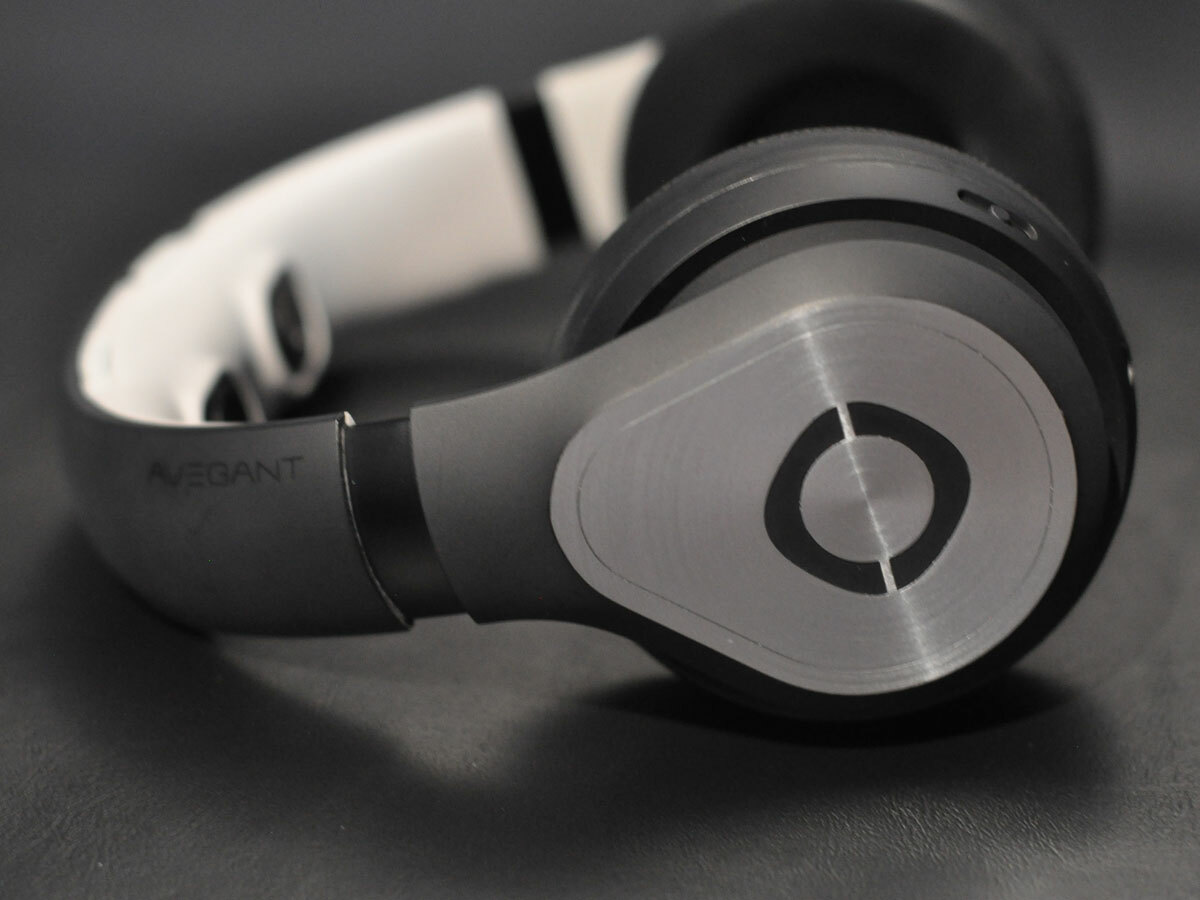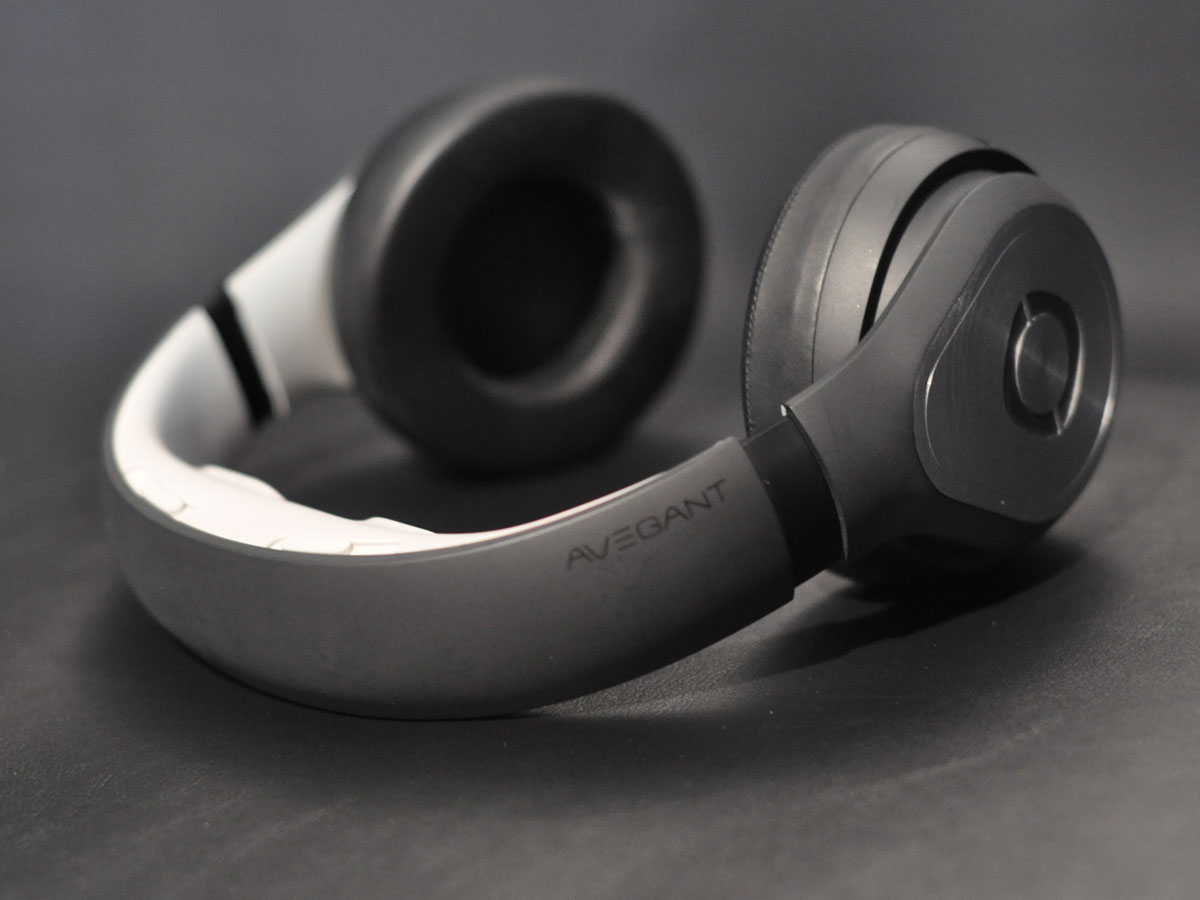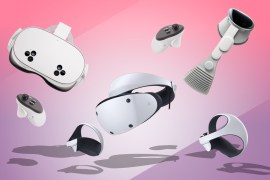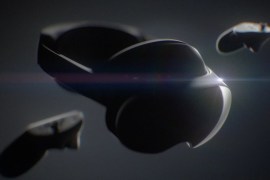CES 2015: Eyes-on with Avegant’s Glyph, the headset that’s built into a pair of headphones
Perhaps you don't need to look like Lawnmower Man after all
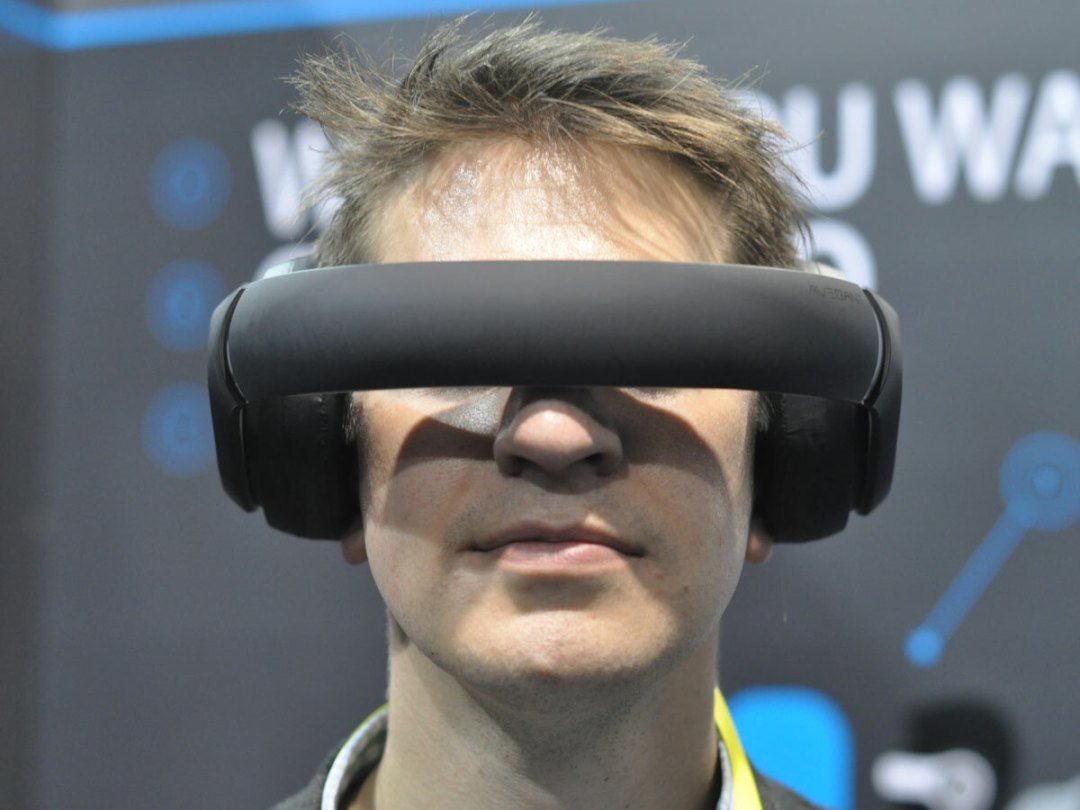
For all the things head-mounted tech has going for it, style isn’t one of them. It is a point of fact that you can’t look good wearing a head-mounted display.
It is however possible to carry one around on your head in a relatively unobtrusive way – or it soon will be. Avegant’s Glyph is a HMD that’s built into the strap of a pair of headphones – so in order to segue from reality into the metaverse, or from the packed tube to an episode of Game of Thrones, all you need do is rotate the band over your eyes.
That’s the theory at least. At CES 2015, Avegant was showing off final designs for the Glyph made of solid metal and plastic with no tech inside, as well as a hand-built, jury-rigged working prototype. Put the two together and you have the final product, expected later on this year and currently shipping for $500 ($600 as of next week).
I went head-on to get an idea of the final Glyph experience. Turns out it’s not what you might expect.
Fashion headphones are everywhere, and just about every artist has their own brand of ‘stylish’ cans. Dr. Dre (obviously), Justin Bieber (unfortunately), The Wurzels (perhaps), Barbara Streisand (I assume). The point being that endless styles are available, and some look rather nice.
The Glyph isn’t shamed in that company. The headphones are bulky, like a slightly bigger set of Beats Studios, but are nicely finished in soft-touch plastic, spun aluminium and pliable leather.
The headband is currently a solid piece of plastic that allows you to make adjustments to eye position and focal length with simple dials. This is where things come a little unstuck, at least in the design proof guise, as the moulded eye pieces dig into your crown when worn as headphones.
This will no doubt be less problematic in the final version, though, as the proof is a heavy, solid lump compared to the claimed 16oz of the final product. Certainly, the prototype was much more comfortable to wear.
It’s not just a headset
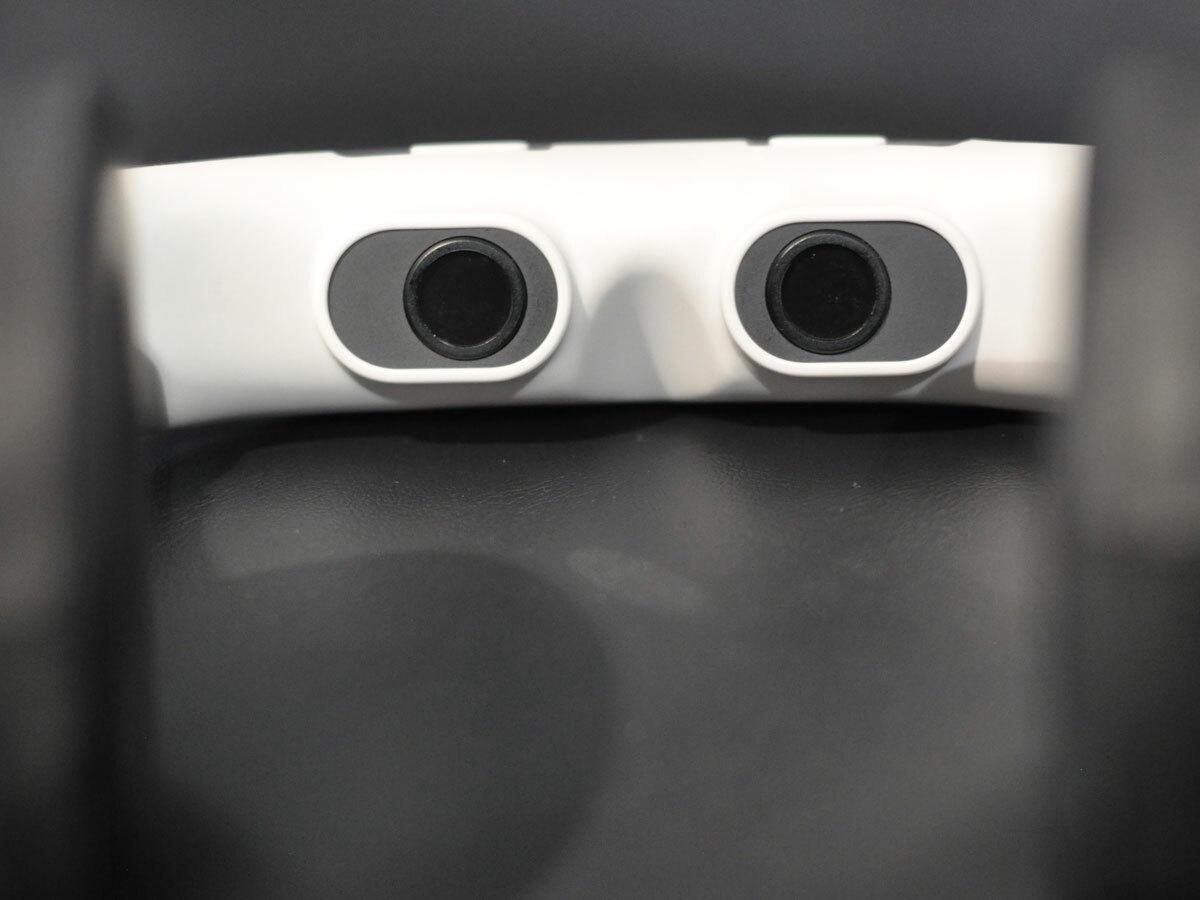
Avegant fully intends you to use the Glyph as your headphones. They’re equipped with Bluetooth for streaming, pack active noise cancelling, will use high-quality drivers and have built-in batteries good for days of playback.
The headband is where the really interesting stuff happens, though. Instead of using a smartphone screen overlaid with a pair of lenses as the Oculus Rift does, the Glyph uses a 120Hz DLP array of two million micro mirrors (1280 x 720 to each eye) to project the image directly on to your retinas. It’s a novel approach which saves a lot of space, but Avegant claims there are other benefits, such as a Retina-level image resolution.
Also unlike the Rift, the Glyph isn’t intended to completely fill your vision with an image. Instead of the 100º field of view offered by Oculus, the Glyph opts for around 45º, so the 3D image you’re viewing is shrouded by black bars. It’s theoretically equivalent to watching an 80in TV from 2.6m away.
Other components include a 6-axis sensors for head tracking. Images are fed to the Glyph via microHDMI, and charge is provided via USB, although the built-in battery is good for ‘about two movies’ – between four and five hours. Not bad, assuming your long-haul flight offers power sockets.
It’s VR, Jim, but not as we know it
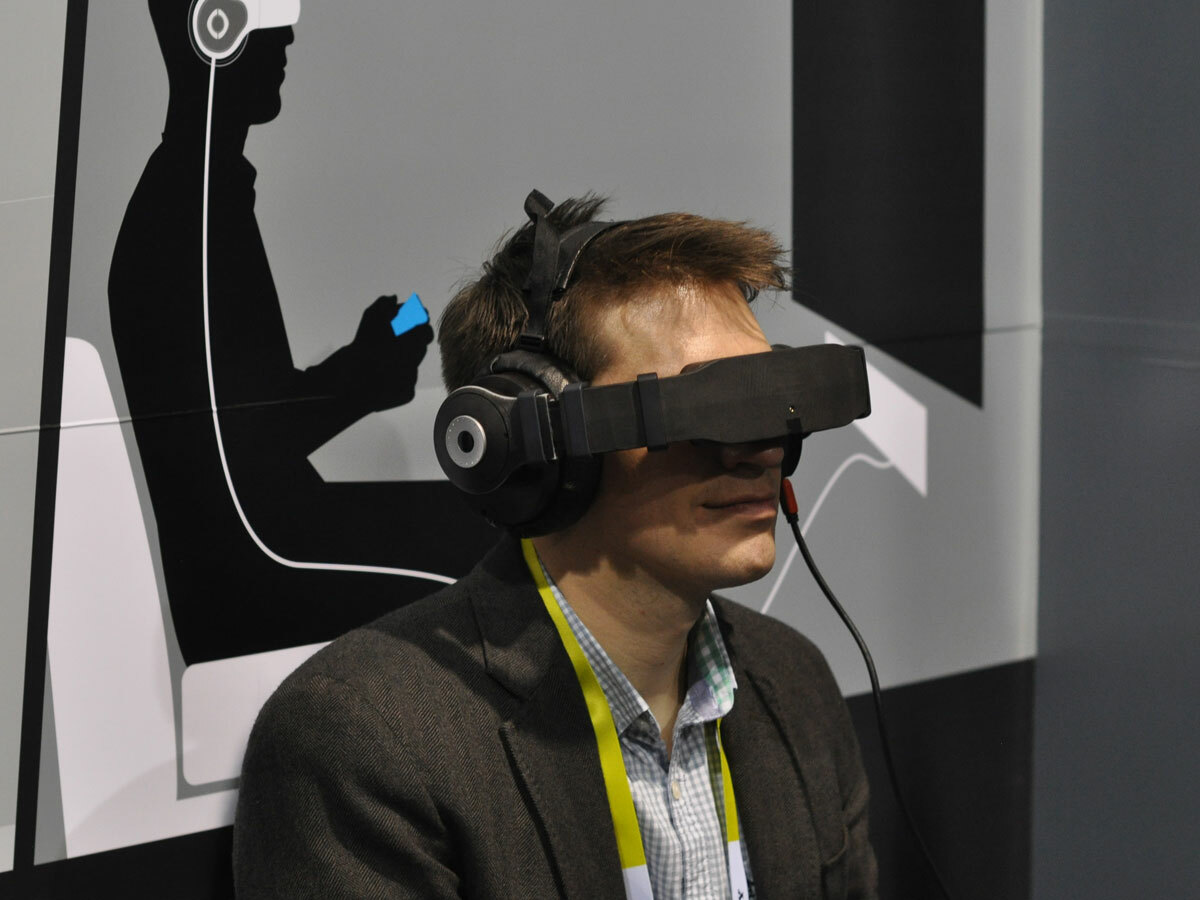
Trying out the charmingly shabby prototype I was struck by the crispness of the 3D image the Glyph presents: there’s no visible grid dividing pixels as there is on most VR headsets. It looks fantastic.
But I was equally struck by the fact that the scale of image is entirely different from a headset like the Rift. Because of that tighter field of view, it’s unlikely that you’ll feel as immersed in the Glyph’s VR experience as you do when you don Crescent Bay. I can’t be 100% sure as the movement-tracking components weren’t functioning when I tried Glyph on (I was stuck watching movie clips), but FOV is a critical component of the VR experience, given that actual reality fills your eyes completely.
Avegant deliberately opted for 45º, as it expects most people to use the Glyph to watch 3D movies or to play non-VR games: a movement-sensitive head-mounted TV rather than a convincing virtual environment. It means the Glyph is more likely to appeal to frequent fliers than hardcore gamers, and has it competing with Zeiss Cinemizer glasses rather than Oculus Rifts. To me, that makes it seem quite old fashioned. Sure, there’s an appeal to having instant access to a distraction-free, high-quality movie watching experience wherever you go, but video goggles haven’t exactly set the world alight to this point.
I’m still looking forward to seeing a version that marries the looks of the final design with the components of the prototype. Will it change the world? No. But it might make the commute more bearable.
READ MORE: All the big news from CES 2015 in one handy place
